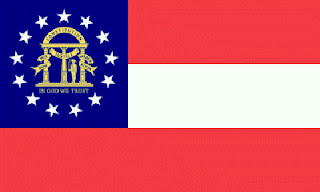The Black Cat
(I made a collage)
One of Edgar Allen Poe's most famously read and celebrated stories is "The Black Cat." Like most of his other stories, "The Black Cat" follows the Gothic convention of literature, a style that explores humanity's fear and fascination with the unknown. Although it originated in Germany, it was revived in the 1700's. Gothic literature investigates man's emotions, particularly fear, in the face of forces we cannot comprehend. Typical motifs of this type include darkness, horrid figures, grotesque imagery, illusion, and spaces. Stories of this sort strip us of our understanding, and sensationalize us, giving us a thrilling sense of terror that we enjoy.
Although Perverseness is the theme of Poe's story, he uses the feeling of guilt as a kind of fear. By detailing the decline in the main character's mental state throughout the story, Poe demonstrates the loss of control over one's own behavior and the horrifying effects, touching on the fear of one's own self as fear of the unknown. The narrator beings the tail claiming to be perfectly sane, but over time his account shows that he indeed has a spirit of perverseness that surprises even himself. Through a series of violent acts, he brings about his own destruction. The elements of horror in this tale are very apparent.
One primary element of gothic literature is the superstitious blurring of the line between the normal and the fantastic. Poe accomplishes this in a number of ways. The narrator, for example, is unreliable, being insane. In his account, he claims that the exact shape of a cat hanging on a noose was imprinted on a wall in the ruins of his old home. Although he tries to explain it naturally, it seems that there may be supernatural elements at work. The changing shape of the gallows on the new cat's white spot have similar effects. The narrator's wife even had a suspicion of black cats.
Revenants and haunts from the dead are often prevalent in Gothic literature. In the story, the second cat the narrator happens upon is a double of the first, and represents a revenant or ghost of the first-the one he killed. When the narrator kills his wife and walls her up, he attributes the scream from inside to the cat, although he describes it as sounding very human, as if his wife's ghost had screamed.
Gothic architecture plays with open spaces and depicts the decay and gnarling of human creations. Likewise, Poe explores a lot of psychological space in his story, and takes the reader on an emotional tour through the mind of a madman until reaching his final emotional breakdown and mental defeat. Poe's narrator is so perverse that his mind eventually becomes so twisted it is inhumane. The narrator could almost be described as a Byronic hero, being a flawed and tragic protagonist who is a danger to himself and others. Such a character is again typical of the old Gothic romances.
As Gothic movement was in part a rejection of neoclassical rationalism, so does Poe defy all logical explanation of the events in his story, his narrator being completely vexed by his own uncontrollable actions. The destruction of his house, and the eerie basement of his new one are representatives of usual structural motifs of Gothic variety. He explores perverseness as a thematic gateway to inner, inexplicable terror. "Terror is not of Germany," Poe once said, "but of the soul." Thus he revitalized in Victorian America a genre that had all but lost popularity until his time.












